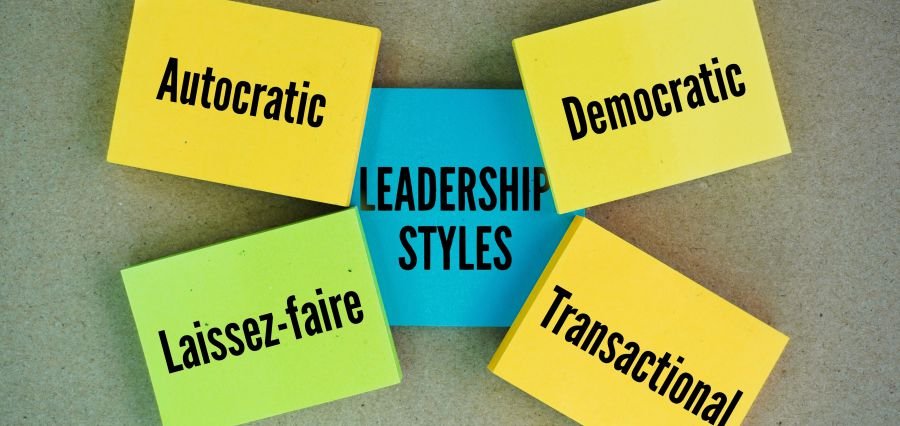Leadership has always been the key factor that sets humans apart in the world of progress. The way leaders encourage and manage lasts over time. They have changed the fate of entire empires during their times of crisis, and at the same time, they have brought innovation to contemporary businesses.
So much of what is called leadership is actually a very complex system which does not have a universal solution. What is more, there are different leadership styles that have their specific traits, pros, and cons. What is more important is that knowing these styles not only facilitates organizations to succeed, but on the other hand, it helps the employees to see their own real leadership personality and grow it.
Why Leadership Styles Matter?
Many times, while discussing leaders, we mostly concentrate on their charm and influence, but leadership as such is much more layered than just a few personality features. Leadership styles affect not only the organization’s culture but also the way decisions are made and even the feelings of the people who are under a particular leader’s guidance.
For instance, a leader who practices teamwork may provide indestructible commitment and new ideas, whereas a strictly authoritative manager could maintain order, at least, but at the cost of creativity, and might get oppressed.
The significance of leadership styles is their ripple effect. For instance, how well a company performs overall, how engaged its workers are, or how easily it can change directions, a lot of this depends on the way the leaders respond to the challenges. A picture that leadership styles can depict is that of a captain deciding on whether his crew just manages to live through the stormy weather or truly thrives in it.
Exploring the Types of Leadership Styles
Leadership might seem to be a natural talent, still, findings prove it is largely dependent on one’s choices, conduct, and skills. Multiple leads have been carved out by the experts in various manners in history, the approaches having been classified into major themes. Though each leadership style is grounded in a different viewpoint, none is by default superior to the others. Personality type, setting, time, and target goals are the deciding criteria in judging an approach' superiority.
For an instance of visionary leadership, we could say it excels in times of situation transformation. By being dedicated to the big picture, visionary leaders motivate followers with a point and a route. On the contrary, managerial types regulate through compliance, resorting to established norms and providing compensations or punishments. Without harming either of the approaches, their effectiveness can be realized by the usage of different conditions.
The Evolution of Leadership Styles in Modern Workplaces
Leadership for a long period was most often synonymous with absolute control or unchallengeable authority. In some strictly hierarchical organizations, the boss-follower relation pattern was simplistic in terms of roles and behaviours; the leaders issued directives/commands, while the followers performed/adhered.
Besides maintaining order, this method of functioning did not really induce innovation. With the development of workplaces, particularly owing to the establishment of technology and the appearance of culturally diverse global teams, leadership styles needed to keep pace with the evolution.
Modern employees want both guidance and autonomy in their careers, so the work environment is now much different than before. Leaders must not be indulgent nor strict; instead, they are supposed to be caring, approachable, and skilful in orchestrating collaboration and, at the same time, making fairly strong decisions.
Organizations today are putting big money on the kind of leaders who are not only able to push for high performance but also to take care of the psychological and emotional health of their team. This turn has rendered the various leadership styles more versatile than ever.
Common Leadership Styles and Their Impact
The main forms of leadership that have been the subject of the loudest public controversies are the authoritarian, democratic, laissez-faire, transformational, transactional, coaching, and servant leadership. Speaking about leadership styles and their roles in work environments, we may cite that, for instance, the democratic leadership’s major feature is that team members get a chance to discuss solutions with a leader; thus, their decision-making skills, as well as ownership of the solutions, get enhanced.
Conversely, a coaching habit implemented by a leader can result in the magnification of the individual’s potential and the latter’s perception of the leader as more of a mentor rather than a guide.
Transformational leadership practices shine during sudden changes in the system. These characters lift the spirits by fabricating an electrifying vision and giving the exhortation to outstrip their own limits. Servant leadership totally reverses the notion of power by being the least among the team and thus, stressing the values of empathy and service over pride and authority.
The success of these leadership models largely depends on the circumstances. For example, an authoritarian style may produce the best results in the sectors where safety and strict regulations are an absolute must, such as aviation or healthcare. While democratic or transformational leadership methods can be better applicable to artsy types of business, like marketing or technology, where the new ideas get life by gathering various viewpoints.
Adapting Leadership Styles to Match Different Teams
While leading superbly, they often face a situation were sticking strictly to one style is not even an option. In fact, these managers must alter their leadership personality gear as per team dynamics, company goals, or even cultural differences. A team of different individuals may, for example, have a better response to the open style of decision-making, whereas a team under pressure of running out of time could be looking for a leader to be more straightforward and organized.
The main point that makes leadership enviable is the perfect ability to mix different styles cleverly. One leader might be transformational regarding the big picture, transactional in the matter of following through on responsibilities, and coaching in team skill development. The adjustment strengthens the leader’s position and provides comfort for the followers.
Leadership Styles in Personal Growth
Leadership is not only about the power plays or the high seats; it is also a factor that shapes the development of personality. No matter if one is leading a tiny project or supporting a family, leadership styles come into play in every individual’s life. Knowing which of the leadership styles is your strongest point can do wonders for your confidence; nevertheless, being willing to expand your horizons and try out new methods is what really takes the leadership quality to the next level.
Suppose one person naturally leans towards the serving of others; they might then find the servant leadership style to be the most effective one for them. However, if the situation is such that it needs to be resolved quickly and firmly, then they would have to shift to a more authoritative one. Regular self-examination and learning serve as a Holy Grail in handling these styles effectively.
The Future of Leadership Styles
The faster the world gets more interdependent, the further leadership styles will be from what they used to be. The characteristics of leaders in the future will be those of embracing flexibility, emotional intelligence, and being culturally sensitive. Just as technology keeps changing, remote collaboration keeps rising, and workforce values keep changing, waiting for leaders who will be good at gaining trust even across boundaries, but still maintain their vision.
In this fluctuating environment, those leaders who inculcate different styles are the ones who will have the upper hand. They do not just live in the past; they learn from it and play on its strengths in facing the present difficulties. Consequently, they become the builders of a future where both people and organizations get to thrive.







